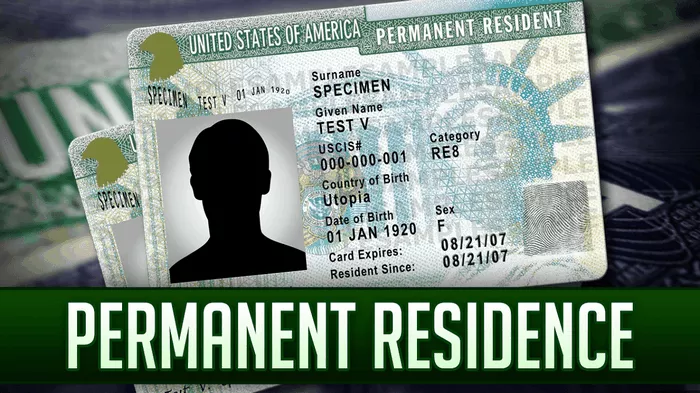Obtaining permanent residency, also known as a green card in the United States, is a significant milestone for many individuals seeking to establish long-term residency in a new country. However, navigating the complex immigration process can be daunting, particularly when it comes to understanding the associated costs. From application fees to legal representation, the expenses involved in filing for permanent residency can vary widely depending on individual circumstances and the immigration pathway pursued. In this comprehensive guide, we will delve into the various factors that contribute to the cost of filing for permanent residency and provide insights to help applicants budget effectively.
Understanding Permanent Residency
Before delving into the costs, it’s essential to grasp the concept of permanent residency and its implications. Permanent residency grants individuals the right to reside and work indefinitely in a foreign country. In the United States, obtaining a green card opens up numerous opportunities, including eligibility for certain government benefits, the ability to sponsor relatives for immigration, and the possibility of applying for citizenship after meeting residency requirements.
Factors Affecting the Cost of Filing for Permanent Residency
The cost of filing for permanent residency can vary significantly based on several factors, including the immigration pathway chosen, legal representation, application fees, and associated expenses. Let’s explore each of these factors in detail:
1. Immigration Pathway:
There are various pathways to obtain permanent residency in the United States, each with its own set of requirements and associated costs. Common pathways include family-based sponsorship, employment-based sponsorship, investment-based programs such as the EB-5 Immigrant Investor Program, and diversity visa lottery programs. The complexity and requirements of each pathway can impact the overall cost of the application process.
2. Legal Representation:
While not mandatory, many individuals choose to enlist the services of an immigration attorney or accredited representative to navigate the permanent residency application process. Legal representation can provide invaluable guidance, ensuring that applications are completed accurately and in compliance with immigration laws. However, legal fees can vary depending on the attorney’s experience, location, and the complexity of the case.
3. Application Fees:
One of the most significant expenses associated with filing for permanent residency is the payment of application fees to the government. These fees cover the processing costs associated with reviewing and adjudicating applications. In the United States, application fees for permanent residency can vary depending on the type of application and whether the applicant is inside or outside the country at the time of filing. For example, as of 2022, the application fee for Form I-485, Application to Register Permanent Residence or Adjust Status, was $1,130, excluding biometric services fees.
4. Biometric Services Fees:
In addition to application fees, applicants may be required to pay biometric services fees, which cover the cost of fingerprinting and background checks. These fees are typically required for Form I-485 and certain other immigration applications. As of 2022, the biometric services fee for Form I-485 was $85 per applicant.
5. Medical Examination Costs:
Many immigration pathways require applicants to undergo a medical examination conducted by a designated civil surgeon to ensure they meet health-related admissibility requirements. The cost of the medical examination can vary depending on the healthcare provider and the specific tests required. Additionally, applicants may need to cover the cost of any vaccinations or follow-up treatments recommended by the civil surgeon.
6. Translation and Documentation Costs:
Applicants whose documents are not in English must provide certified translations of all relevant documents, such as birth certificates, marriage certificates, and academic transcripts. The cost of translation services can vary depending on the complexity and volume of documents requiring translation. Additionally, applicants may need to obtain official copies of documents from government agencies, which may incur additional fees.
7. Travel Expenses:
For applicants residing outside the United States, the permanent residency application process may involve travel to attend interviews or biometric appointments at U.S. consulates or embassies. Travel expenses, including airfare, accommodation, and meals, can add to the overall cost of the application process. It’s essential to budget for these expenses when planning for permanent residency.
8. Adjustment of Status vs. Consular Processing:
The method by which an individual applies for permanent residency—either through adjustment of status within the United States or consular processing at a U.S. embassy or consulate abroad—can also impact the overall cost. Adjustment of status may involve additional fees and expenses, such as travel to attend interviews and biometric appointments, whereas consular processing may require travel abroad and associated expenses.
Conclusion
Filing for permanent residency is a significant step in the immigration journey, but it’s essential for applicants to be aware of the costs involved and plan accordingly. By understanding the various factors that contribute to the overall cost, individuals can budget effectively and navigate the application process with confidence. Whether pursuing family-based sponsorship, employment-based sponsorship, or investment-based programs, seeking legal guidance and staying informed about current application fees and requirements can help streamline the process and increase the likelihood of a successful outcome. While the costs of filing for permanent residency can be substantial, the benefits of obtaining permanent residency, including stability, security, and the opportunity to pursue the American Dream, make the investment worthwhile for many individuals and families.


